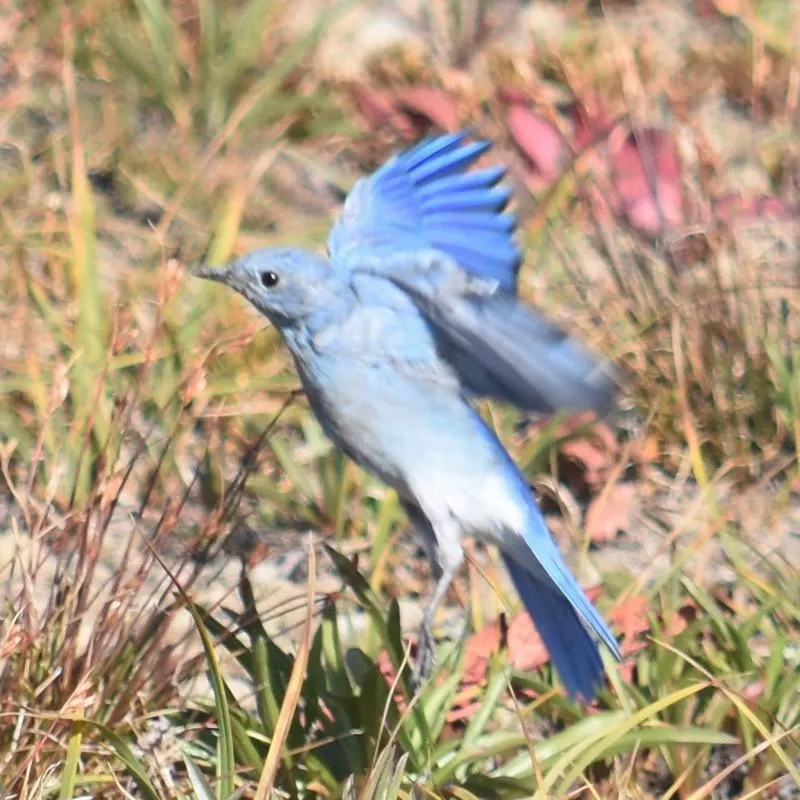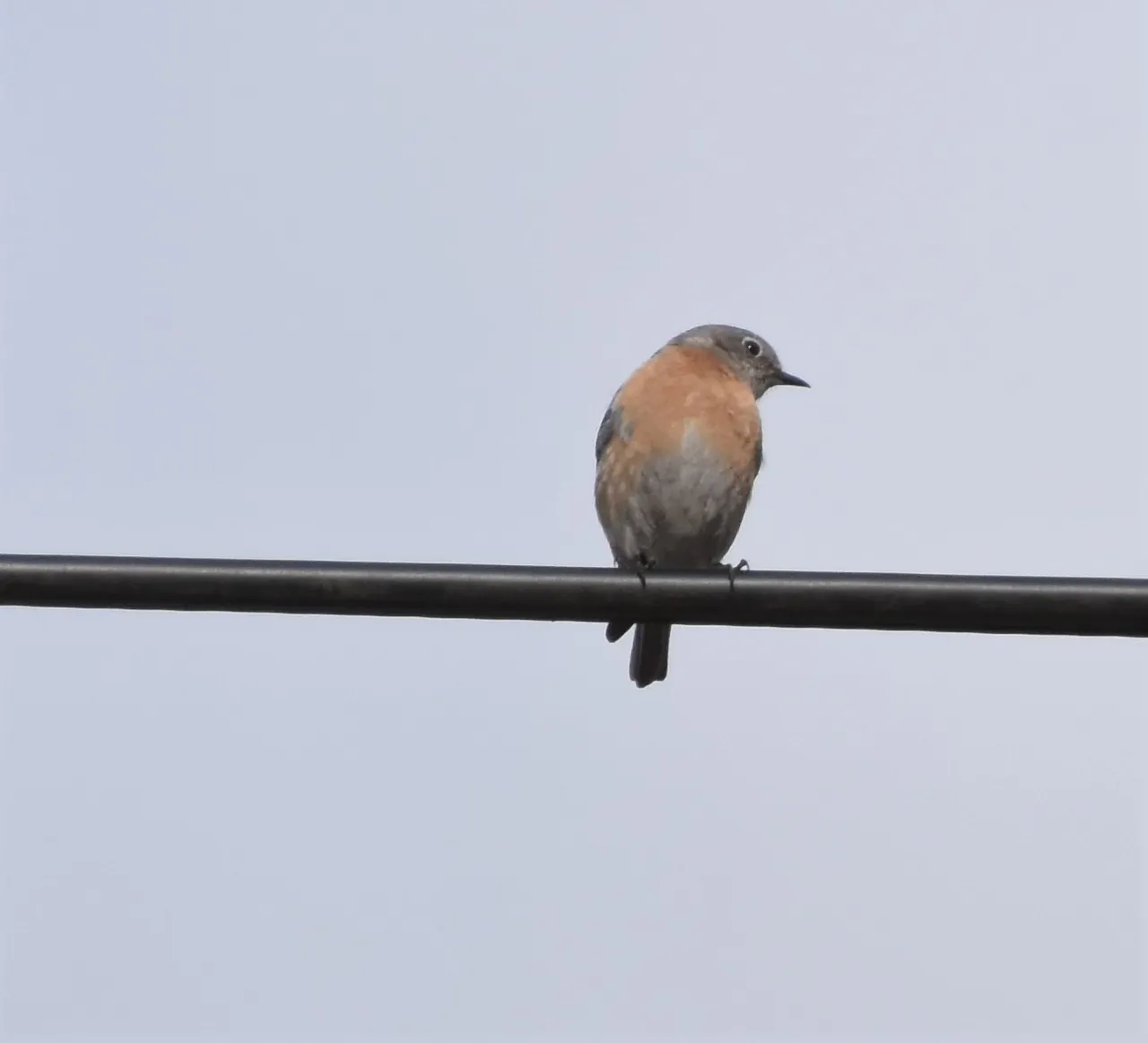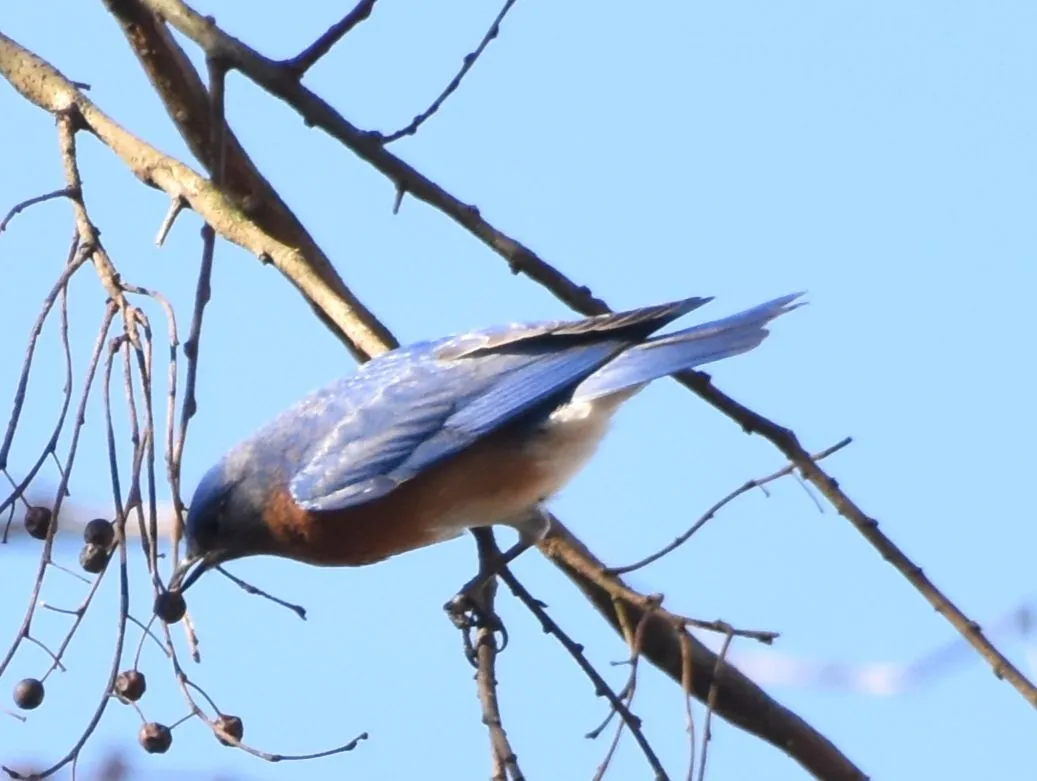
Mountain Bluebird Sialia currucoides
In the U.S. we have three species of bluebirds. By bluebirds I am referring to the three members of the thrush family that are known as bluebirds, not all the blue-colored birds in the U.S. The Mountain Bluebird above is the only one of our bluebirds that is all blue. The male, seen above is entierly the fabulous "sky-blue" color you see in this photo. Here is a photo in flight:

Out other two bluebird species are similar in appearance, the Eastern Bluebird and the Western Bluebird. Overall the males of these two species are a deeper shade of blue along with some orangish and while colors.

This is a female Western Bluebird Sialia mexicana

This is a male Eastern Bluebird Sialia sialis
In both our Eastern and Western Bluebirds the males have a deeper blue color. In the Eastern Bluebird the belly is white and the blue on the head barely extends below the bill, with most of the throat area the orange color. In the Western Bluebird the belly is mostly blue and the blue on the head extends well below the bill to make the throat extensively blue.
Practically telling Eastern from Western Bluebirds is not a problem because their ranges have minimal overlap.
All of our bluebirds return to their breeding areas early, often establishing nest cavities in Feb-April, though usually not laying eggs that early. This is felt to be so that they can defend the limited cavities available to them from other individual bluebirds and from other cavity nesting species.
Introduced House Sparrows and European Starlings compete for nest cavities and tend to be more agressive and successful at driving off bluebirds. People have learned to make artificial cavities (nest boxes) with openings barely large enough for bluebirds to fit into them, but too small for the bulkier House Sparrow and European Starlings to fit inside. Here is a link to an article on how to build a bluebird specific box. Results of establishing bluebird trails, i.e. series of nest boxes in appropriate habitat have allowed successful recovery of severely diminished bluebird populations throughout much of their ranges.
Good birding.